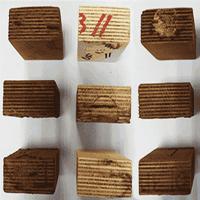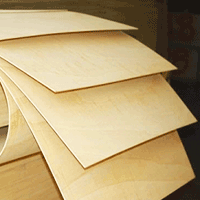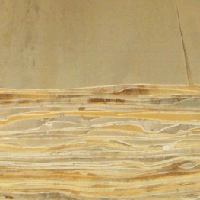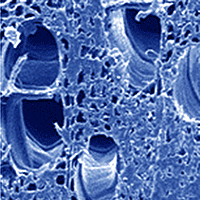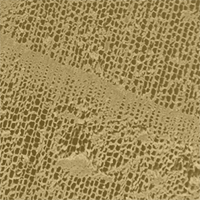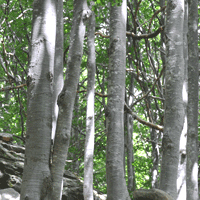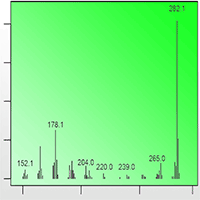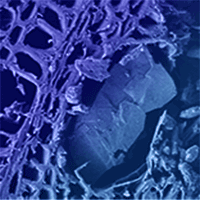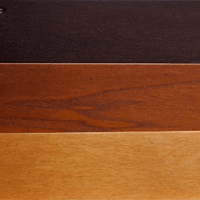
Hardness and contact angle of thermo-treated poplar plywood for bio-building
Roberto Zanuttini, Francesco Negro , Corrado Cremonini
iForest - Biogeosciences and Forestry, Volume 14, Issue 3, Pages 274-277 (2021)
doi: https://doi.org/10.3832/ifor3662-014
Published: May 29, 2021 - Copyright © 2021 SISEF
Research Articles
Collection/Special Issue: Research Project PRIN-MIUR 2015
The forest-wood value chain: biomass supply, traceability, C-footprint. Innovation for bioarchitecture and energy efficiency
Guest Editors: Scarascia Mugnozza G, Maesano M, Romagnoli M
Abstract
The interest towards poplar cultivation and its wood has recently been growing in Italy, where the use of timber and wood-based materials in construction is increasing as well. Poplar plywood, with a national production of around 270.000 m3 in 2017, is a key product for the Italian wood sector, and currently is destined for several applications as component for furniture and motorhomes. Previous research has shown that thermal treatment can be effectively applied to poplar plywood in order to make it suitable to the requirements of new end-uses. The present study aims to widen the knowledge of the effects of thermal treatment on poplar plywood. With this purpose, 7-layered, 12-mm thick plywood bonded with urea-melamine-formaldehyde (UMF) resin was thermally treated for 2 h at 170, 190 and 210 °C through the Termovuoto® process. The treatment aimed to improve the dimensional stability and durability against fungal decay. The process was set at lower temperature and shorter time than those of many thermal treatments commonly used in practice in order to limit the reduction in mechanical properties and to maintain an adequate bonding quality. The above properties were already verified by previous research, whereas in this study Brinell hardness and contact angle of treated panels were investigated as relevant for several end-uses that can be prospected in building and in outdoor environments. Brinell hardness decreased from 10.8 to 8.3 N mm-2 and contact angle increased from 75.8° to 103.6°. Overall, treatment at 190 °C seems the most suitable to induce balanced modifications in the panels. From a technical point of view, these appear ready to enter the market, for instance for use in exterior claddings, partitions and outdoor flooring.
Keywords
Brinell Hardness, Contact Angle, Plywood, Poplar, Thermo-treatment
Authors’ Info
Authors’ address
Francesco Negro
Corrado Cremonini https://orcid.org/0000-0001-7569-9141
DISAFA, University of Torino, l.go Paolo Braccini 2, I-10095 Grugliasco, TO (Italy)
Corresponding author
Paper Info
Citation
Zanuttini R, Negro F, Cremonini C (2021). Hardness and contact angle of thermo-treated poplar plywood for bio-building. iForest 14: 274-277. - doi: 10.3832/ifor3662-014
Academic Editor
Giacomo Goli
Paper history
Received: Sep 29, 2020
Accepted: Apr 08, 2021
First online: May 29, 2021
Publication Date: Jun 30, 2021
Publication Time: 1.70 months
Copyright Information
© SISEF - The Italian Society of Silviculture and Forest Ecology 2021
Open Access
This article is distributed under the terms of the Creative Commons Attribution-Non Commercial 4.0 International (https://creativecommons.org/licenses/by-nc/4.0/), which permits unrestricted use, distribution, and reproduction in any medium, provided you give appropriate credit to the original author(s) and the source, provide a link to the Creative Commons license, and indicate if changes were made.
Web Metrics
Breakdown by View Type
Article Usage
Total Article Views: 35153
(from publication date up to now)
Breakdown by View Type
HTML Page Views: 29742
Abstract Page Views: 2572
PDF Downloads: 2253
Citation/Reference Downloads: 0
XML Downloads: 586
Web Metrics
Days since publication: 1651
Overall contacts: 35153
Avg. contacts per week: 149.04
Citation Metrics
Article Citations
Article citations are based on data periodically collected from the Clarivate Web of Science web site
(last update: Mar 2025)
Total number of cites (since 2021): 3
Average cites per year: 0.60
Publication Metrics
by Dimensions ©
Articles citing this article
List of the papers citing this article based on CrossRef Cited-by.
References
Declino della pioppicoltura in Italia e raccomandazioni per una strategia di rilancio [Decline of poplar cultivation in Italy and recommendations for a relaunching strategy]. Assopannelli, Milano, Italy, pp. 63. [in Italian]
Gscholar
Linee di indirizzo per una pioppicoltura sostenibile [Guidelines for a sustainable poplar cultivation]. Rete Rurale Nazionale, Consiglio per la ricerca in agricoltura e l’analisi dell’economia agraria, Roma, Italy, pp. 63. [in Italian]
Online | Gscholar
Intesa per lo sviluppo della filiera del pioppo [Agreement for the development of the poplar supply chain]. Federlegnoarredo, Venice, Italy, pp. 16. [in Italian]
Gscholar
4° Rapporto case ed edifici in legno [4th report timber houses and buildings]. FederlegnoArredo, Milan, Italy, pp. 37. [in Italian]
Gscholar
Computerised measurement of contact angles. Galvanotechnik 10: 1-11.
Gscholar

